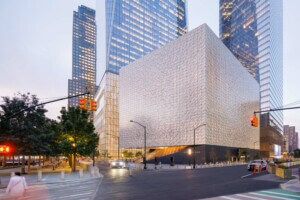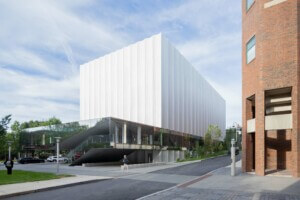More than two decades after the terrorist attacks of September 11, the reconstruction of the World Trade Center complex remains a work in progress. The effort mixes the politics of collective trauma and memory with structural and infrastructural complexity, plus the interests of real estate developers. Dozens of master plans and architectural schemes have been pitched and shelved over the years. Today, the area is home to both memorials and shimmering corporate edifices. The Ronald O. Perelman Performing Arts Center (PAC), designed by New York–based architecture firm REX with executive architect Davis Brody Bond, is a crucial addition.
Sharing a block with One World Trade Center, whose tapered curtain wall quickly became a symbol of 21st-century New York, the PAC sounds a marmoreal, if not funerary, note. Its semitranslucent stone-glass facade, continuous on all four sides, masks serious structural sorcery under a veil of purist simplicity.
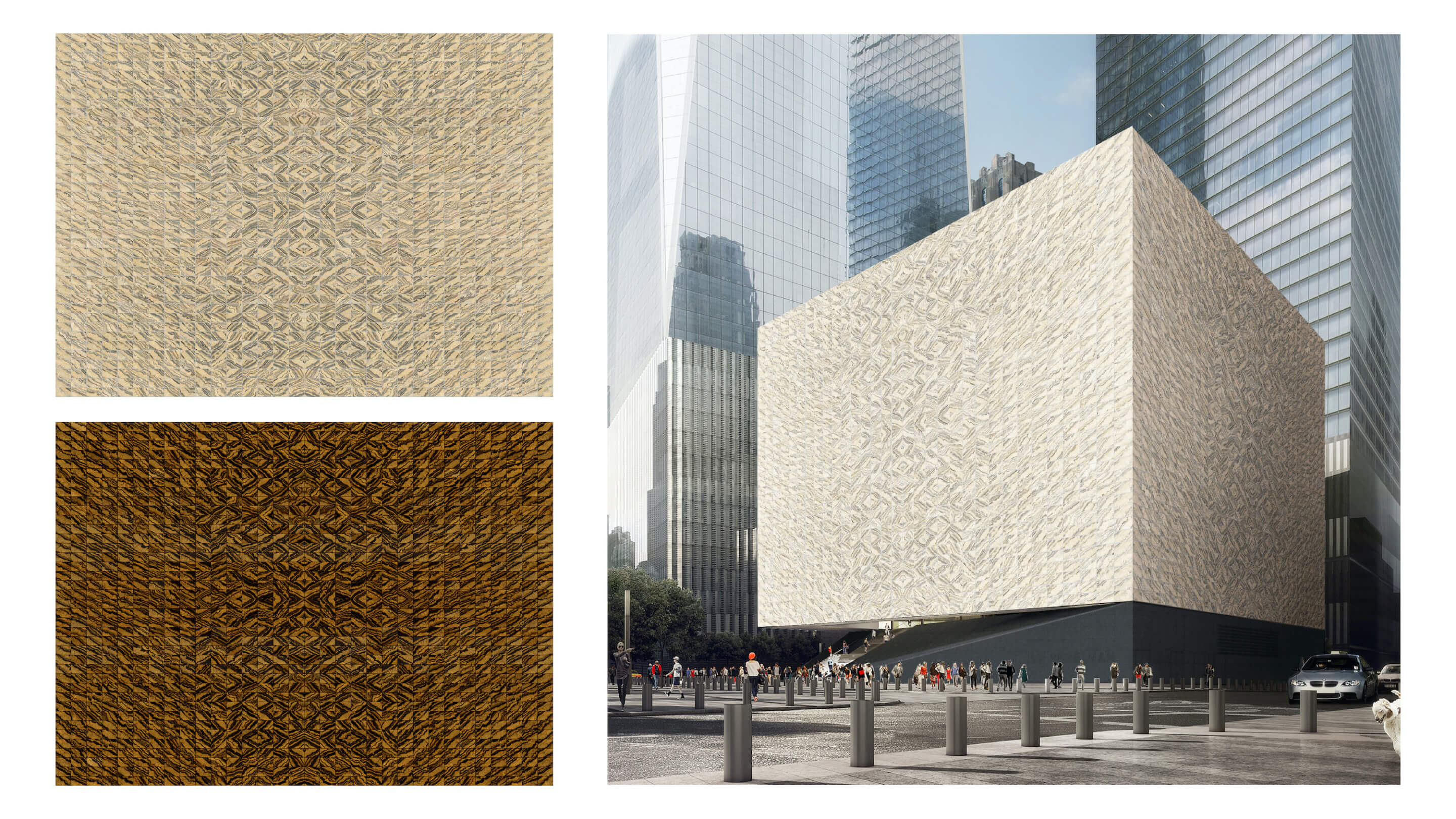
The project was originally awarded to Gehry Partners and Snøhetta in 2004, but following the exit of the Joyce Theater and Signature Theater as stakeholders, the commission passed to REX and Davis Brody Bond in 2014. The 90,000-square-foot complex is named for philanthropist Ronald O. Perelman, who donated $75 million to the cause in 2016. Building works, led by Sciame Construction, commenced in 2019 and are expected to wrap in 2023.
For REX founding principal Joshua Ramus, the most important aspect of the PAC’s design “was to create a concept that was simultaneously respectful yet managed to have an important identity that conveyed the building as the object signifying the restorative powers of art.” He noted that the scheme needed to be conscious of its context and possess a certain sober deference.
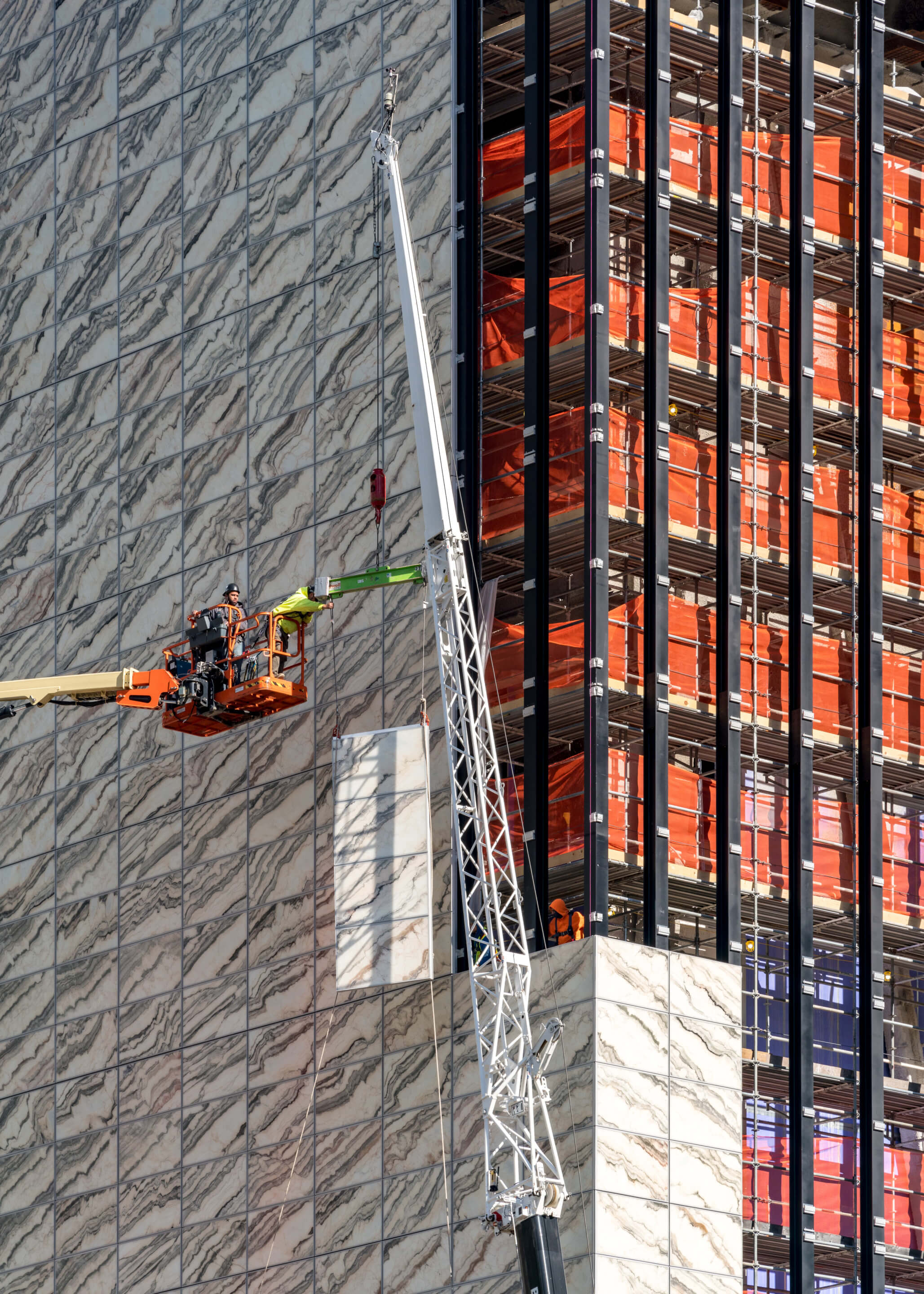
The PAC rises from a highly complex site in New York. It is, in effect, the tip of the proverbial iceberg for approximately four stories of subterranean operational space belonging to the Port Authority, which include a PATH rail line and truck loading bays. This sunken infrastructural knot ruled out a conventional foundation. Instead, the design team, in collaboration with structural engineer Magnusson Klemencic Associates (MKA), was handed a predetermined foundation system by the Port Authority that dictated seven load paths to the concrete structure below—half of which are located outside the building footprint.
Jay Taylor, senior principal at MKA, explained what this process entailed. “We were provided a spreadsheet that listed the load capacity at every one of those points, so we generated what we called the “red dot diagram” to illustrate what was going on below grade,” he recalled. The team “had to reverse-engineer the building and develop a concept that started with the foundation,” which “evolved into a system to engage all of the points that support a building. Basically, it’s a three-dimensional vertical truss system that takes all the loads to those seven points of support.” (The structure also incorporates base isolators to dampen the rumble of public transit below so as not to ruin performances above.)
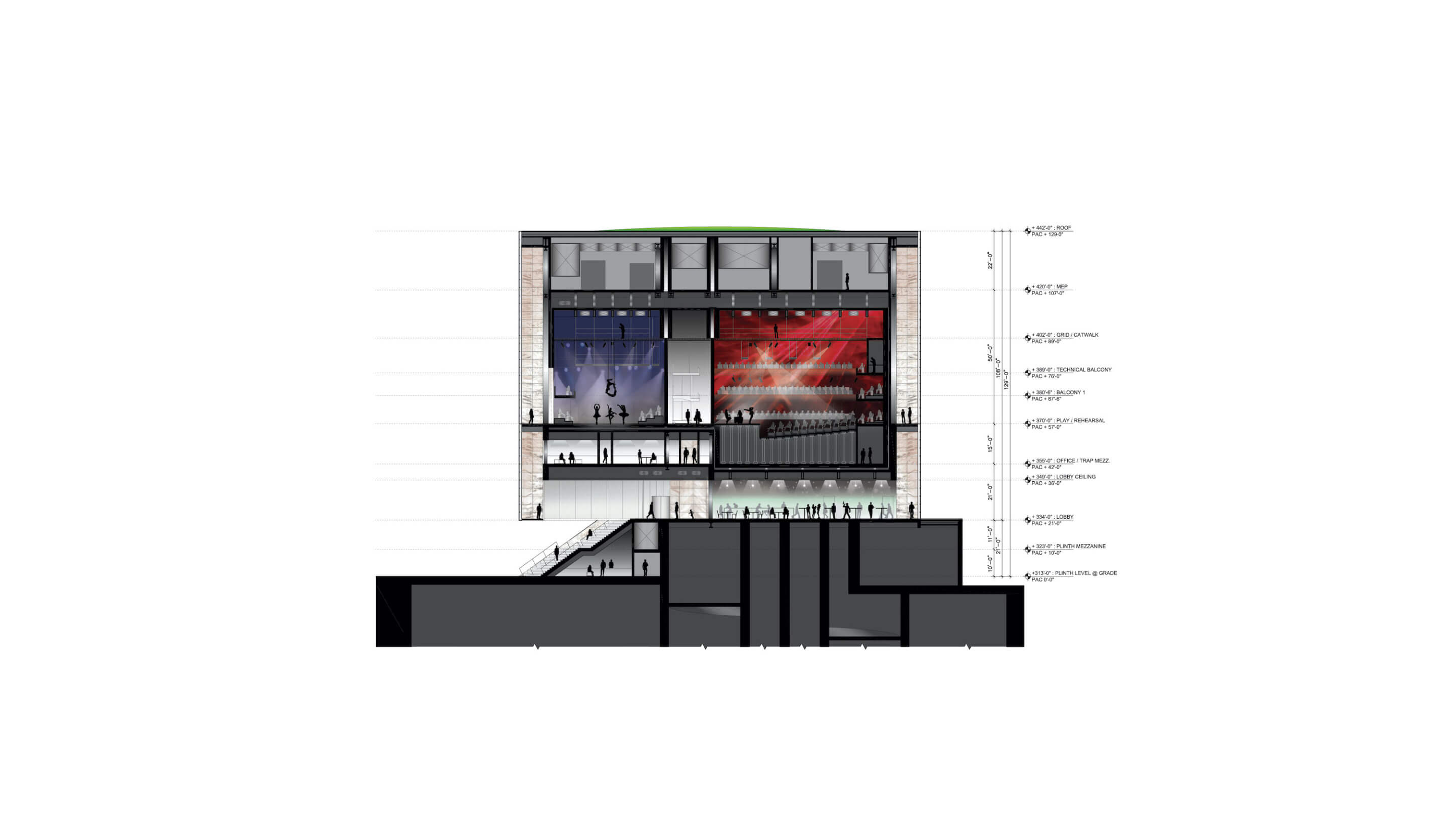
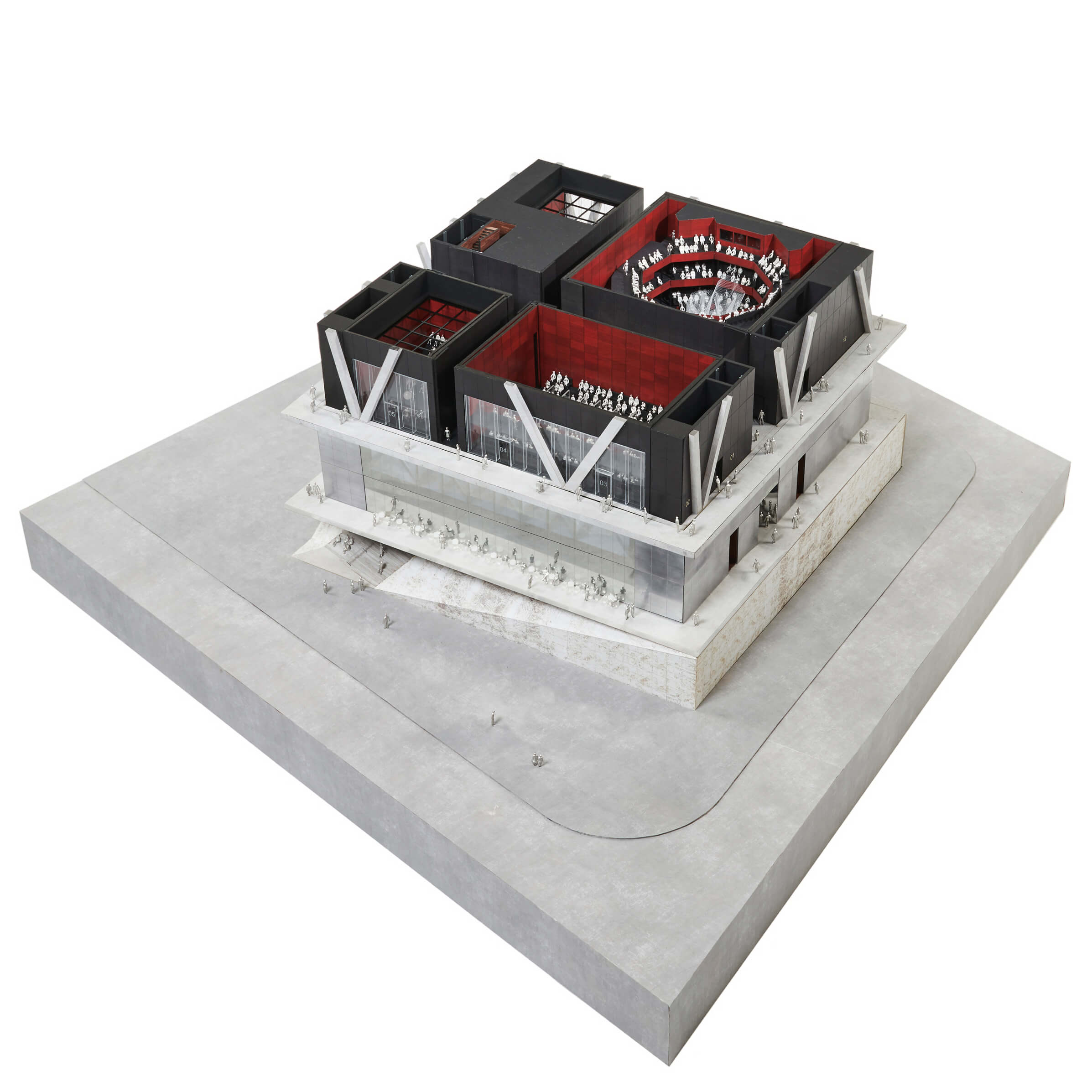
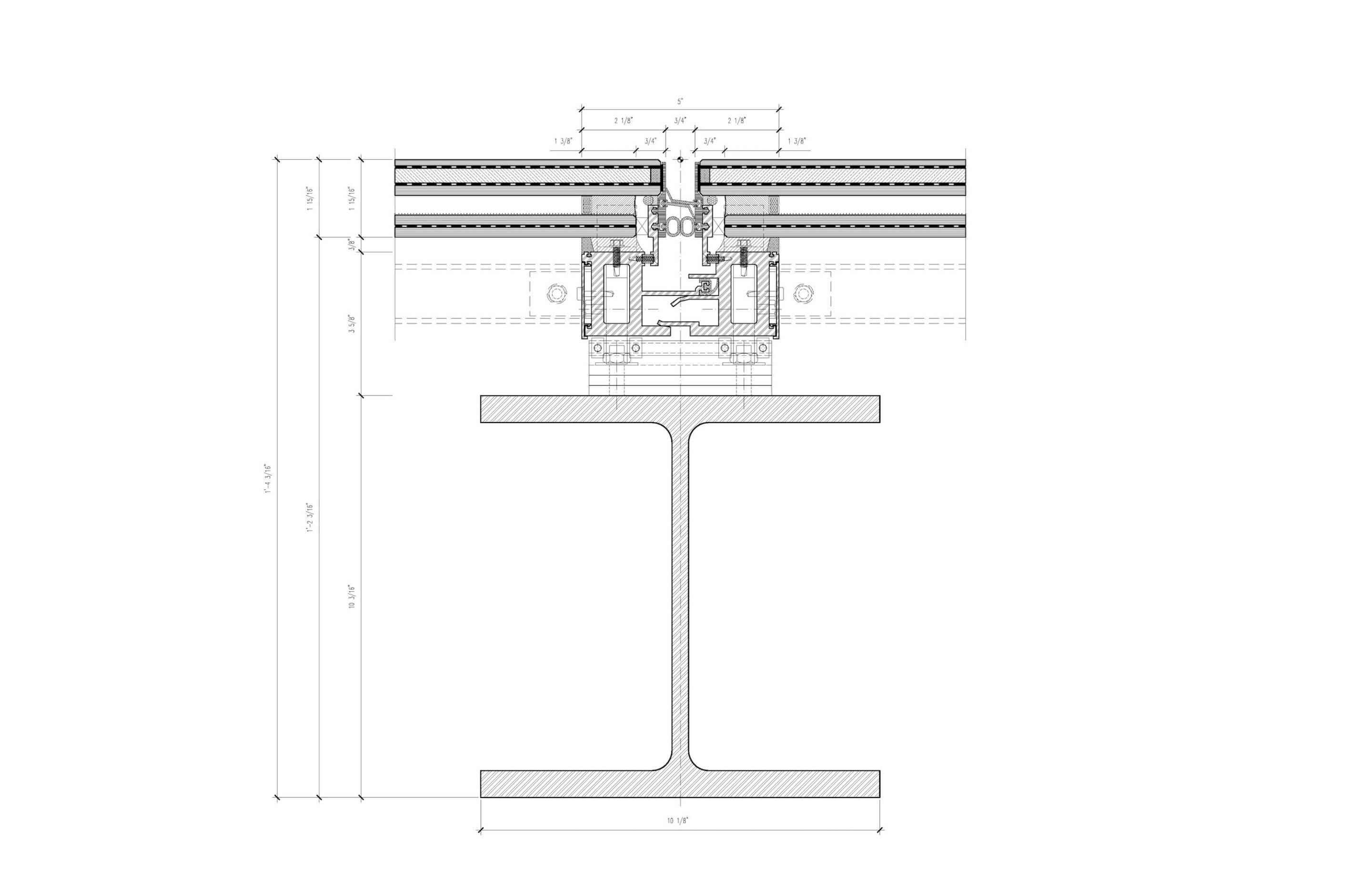
This heroic feat is concealed behind the project’s intensely mesmerizing marble facade. Each elevation is nearly identical and employs both horizontal and vertical symmetry whose center lines define a turbulent zone of densely veined panels. The design of the facade marks yet another partnership between REX and facade consultant Front, continuing a nearly two-decade partnership.
The lively marble array, set between layers of glass, “exceeded our wildest dreams,” said Ramus, who recently presented the project at AN’s Facades+ New York conference. Achieving the facade patterning is nothing short of miraculous, considering the great lengths that the stone had to journey, beginning at a mountainside quarry in Estremoz, Portugal.
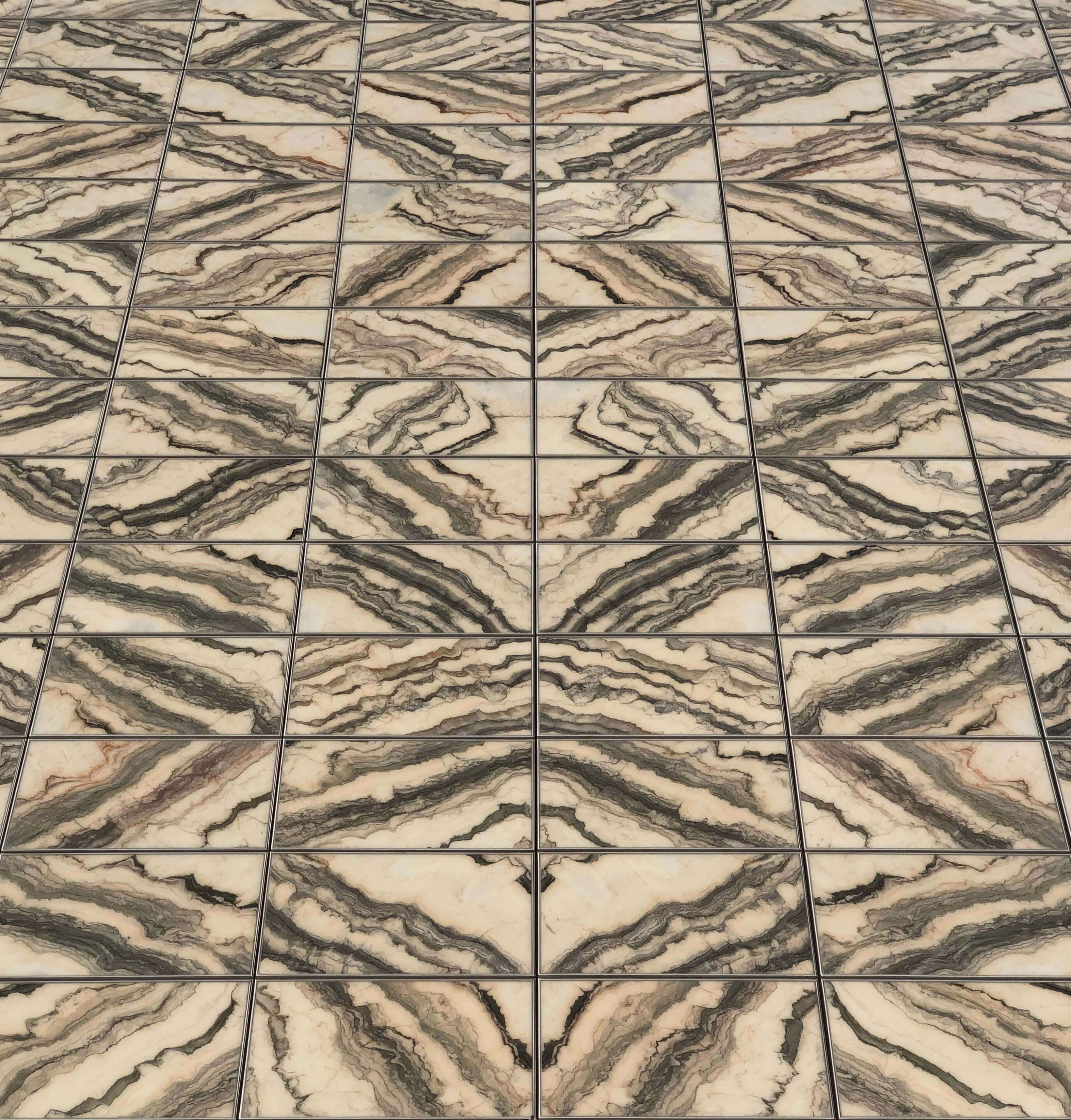
Once quarried, the marble was processed by Portuguese stone fabricator LSI. Then the nearly 5,000 5-by-3-foot marble tiles, each 12 millimeters thick, were shipped to France by AGC; the individual pieces were triple-laminated on their exterior faces, double-laminated on their interior faces, and treated with a low-e coating. Their trek continued to Germany, where fabricator Interpane placed them within insulated glazed units. Then the panels were shipped to Permasteelisa Gartner’s plant in Gundelfingen, Germany, where they were semiunitized into 5-by-12-foot megapanels, four tiles tall. This size is similar to unitized glass curtain wall panels found on any standard commercial office building, which simplified packaging, shipping, and, ultimately, installation in Lower Manhattan.
Drawing inspiration from Yale’s Beinecke Library, designed by Gordon Bunshaft in the early 1960s, the PAC facade also glows at night. The stone goes almost to the end of the panel, except for “a small edge sealant to protect the stone from any kind of delamination,” noted Marc Simmons, a partner at Front. This arrangement “allows the transmitted light to glow around the steel and aluminum [structure], which is a key aesthetic element, as opposed to a huge amount of visual shadowing from the opaque frame.”
That same attention to detail is applied to the programming and layout of the PAC’s three auditoriums. But this count is misleading, Ramus said; in fact, the PAC has “three primal configurations that can be conjoined into 22 different configurations.” Similarly, the circulation is flexible, so “any portion of it can be defined as front of house or back of house. You can share the Wagnerian experience where the public circulates around an auditorium, or you can stage an intermission zone between different auditoriums in simultaneous use.”
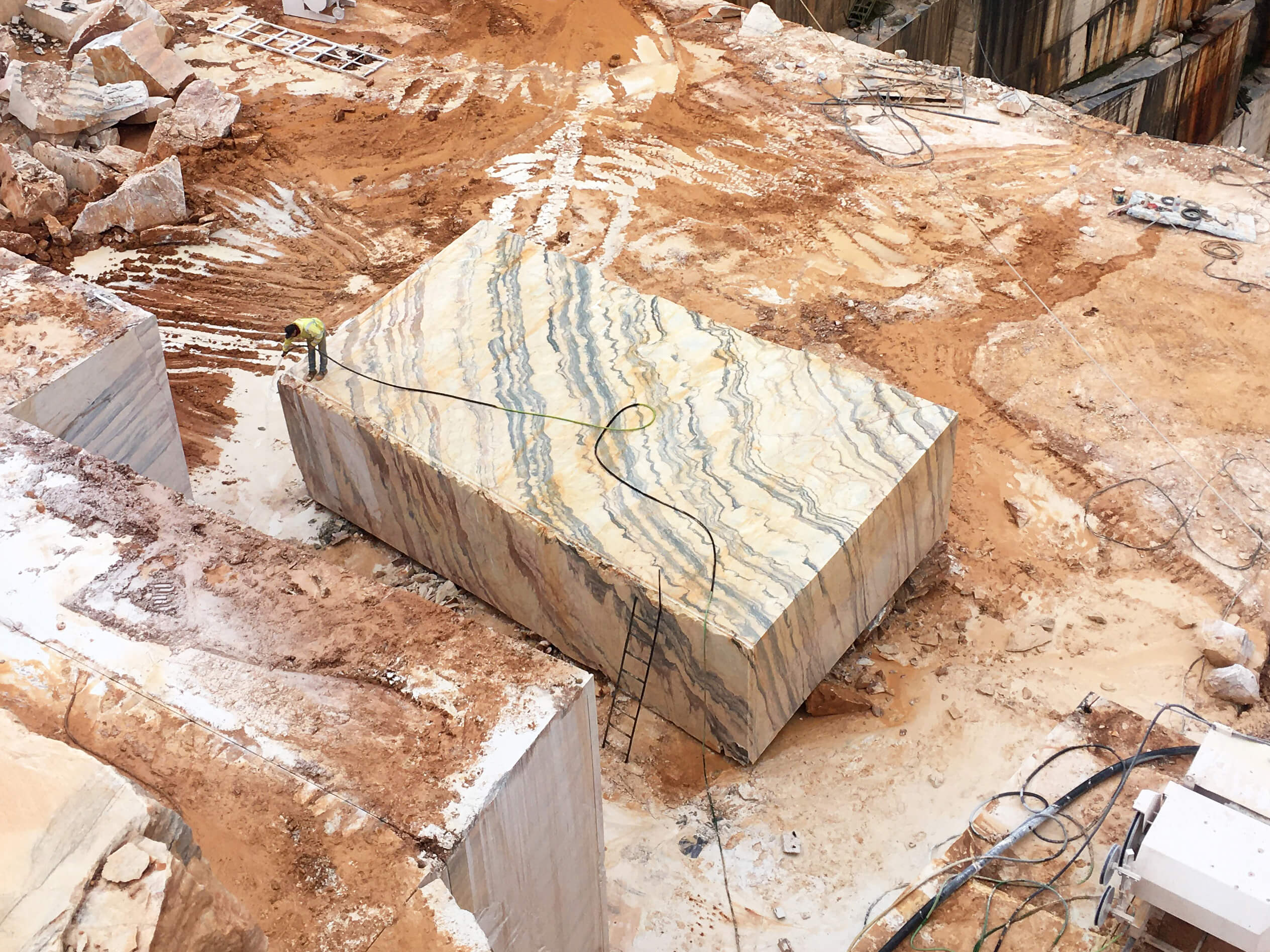
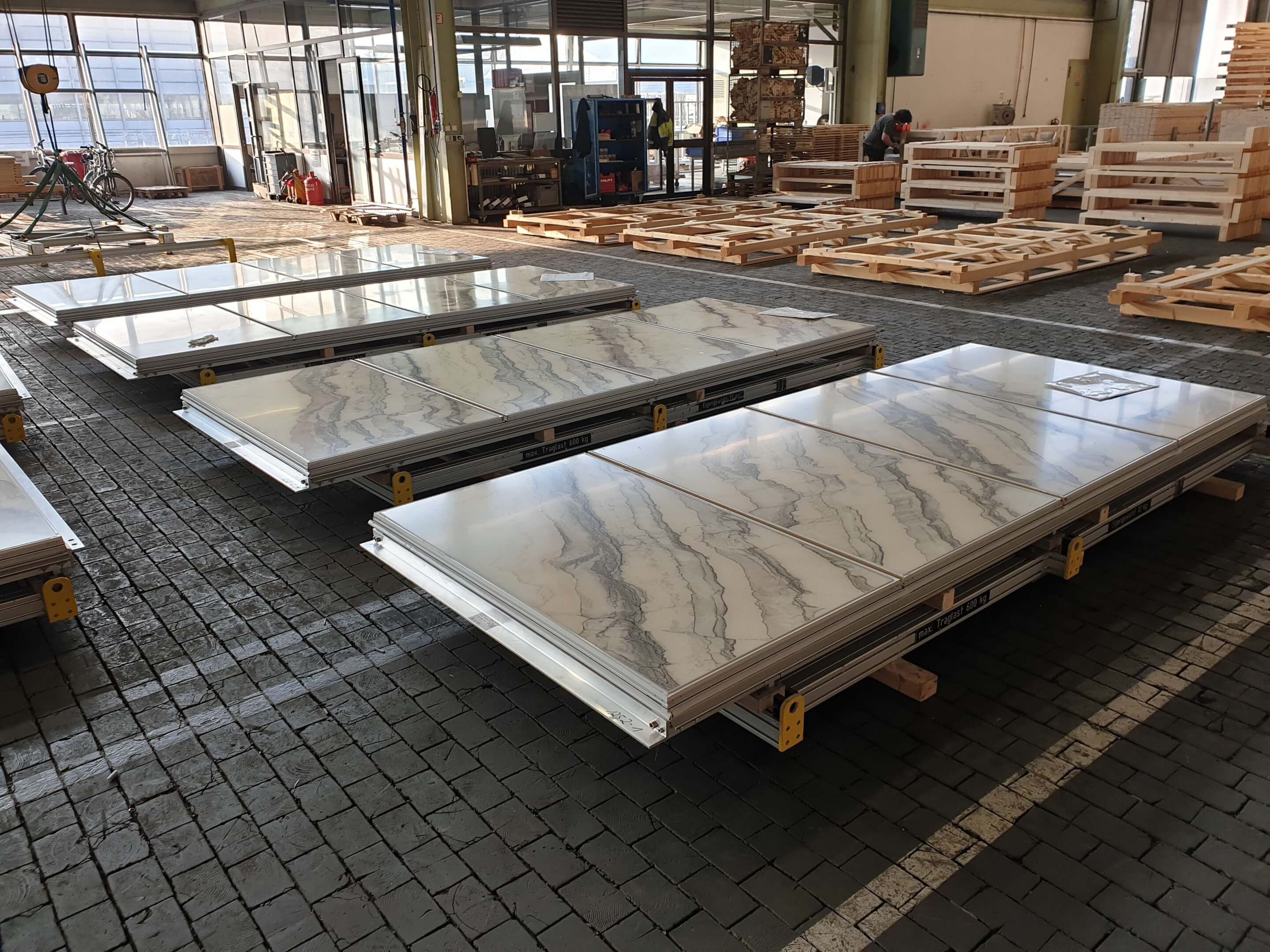
When the PAC opens next year, it will add a geologic glow to the galaxy of New York’s cultural destinations.
Design architect: REX
Executive architect: Davis Brody Bond
Location: New York
Construction manager: Sciame
Structural engineer: Magnusson Klemencic Associates, Silman
Facade contractor: Gartner
Facade fabricator: Permasteelisa Gartner
Stone fabricator: LSI
Glass fabricator: AGC
IGU fabricator: Interpane









